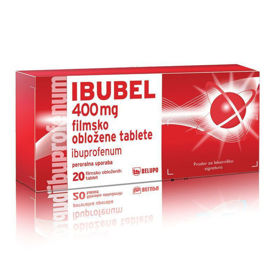Customer question:
What does pain in the lumbar region indicate? Anonymous customer's question
Pharmacist's answer:
Pain in the lumbar region is a common symptom, indicating many possible causes. This area, also known as the lumbar spine, is one of the most stressed back areas and is often the target of various problems. Lumbar pain can be acute, which means it appears suddenly, or chronic, which occurs over a long period or recurs regularly.
One of the most common causes of lower back pain is muscle tension or injury from lifting heavy loads, sudden movements, or prolonged sitting in an uncomfortable position. Muscle tension in the lumbar region can also occur due to excessive physical activity or lack of physical fitness.
A herniated disc occurs when the core of an intervertebral disc bulges through a crack or fissure in the outer annulus. This can put pressure on surrounding tissues, including the spinal nerve, causing pain in the lower back that often radiates into the legs. Osteoarthritis is a degenerative joint disease that can also affect the spine. When the cartilage between the vertebrae breaks down, osteophytes or bony growths can develop, irritating the surrounding tissues and causing pain in the lumbar region.
Spinal stenosis is a condition in which the spinal canal narrows, pressing on spinal nerves and causing pain, numbness, or weakness in the lower back, buttocks, and legs. In spondylolisthesis, one vertebra moves forward relative to the adjacent vertebra, causing nerve compression and pain in the lumbar region.
Kidney stones that form in the kidneys and can move along the ureters can cause severe pain in the lower back that can spread to the lower abdomen and groin. Inflammation of the kidneys or pyelonephritis can cause pain in the lumbar region, often accompanied by fever, pain when urinating, and frequent urination. In women, endometriosis, a condition in which tissue similar to the lining of the uterus grows outside the uterus, can cause pain in the lower back, especially during menstruation.
How can pain in the lumbar area be relieved?
To relieve pain in the lumbar region, you can try the following methods:
- Rest: in the case of acute pain in the lumbar region, it can be beneficial to rest and avoid activities that could worsen the pain.
- Heat: Applying heat packs to the affected area can help relax muscles and reduce tension. You can use a warm bag with warm compresses or shower with warm water.
- Ice: Ice can help reduce inflammation and pain in the lumbar region. Apply ice to the affected area for about 15-20 minutes several times daily.
- Compression: Wear a compression belt or lumbar support to support your back and reduce pressure on the lumbar spine.
- Exercise: Gentle back strengthening exercises and stretching can help improve mobility and strengthen muscles, reducing lower back pain. Consult a physical therapist regarding the appropriate exercise for your condition.
- Massage: massaging the lumbar region by pressing on painful points can help relax muscles and reduce pain.
- Painkillers: For moderate to severe pain, you can take painkillers such as ibuprofen, paracetamol, or non-steroidal anti-inflammatory drugs (NSAIDs), but only as directed by your doctor.
- Acupuncture: Acupuncture can be an effective method of relieving low back pain in some people. Consult an acupuncture specialist.
If your lower back pain persists or worsens, consult your doctor for proper diagnosis and treatment. It is also essential to take preventive measures to prevent re-injury of the back, such as maintaining a healthy posture, regular exercise to strengthen muscles, and avoiding heavy lifting.
Interesting reading: Cough and pain in the lungs
Interesting reading: Right-sided groin pain













